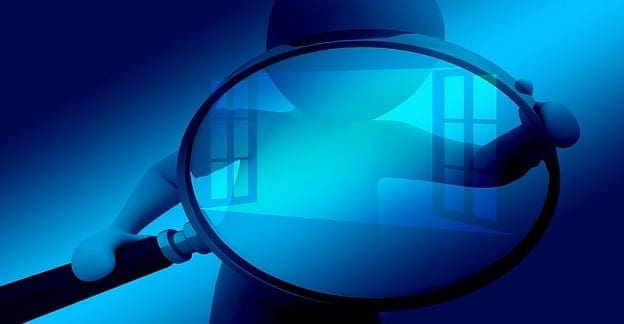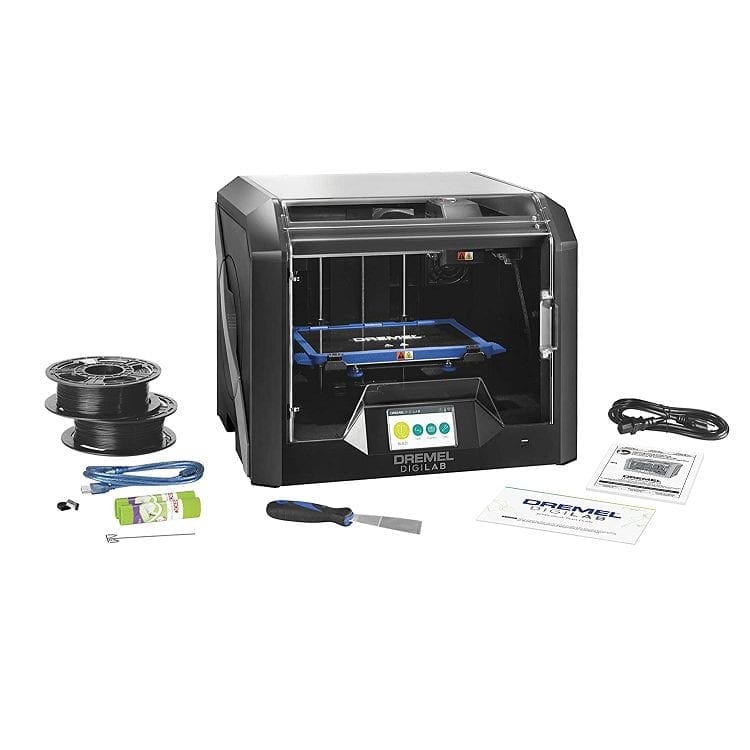Bottlenecking is a natural result of an unbalanced PC build. When you build your own, or at least pick the parts, you might feel tempted to grab whatever you can afford. Or just the most expensive one out there – that’s usually not the best approach. Finding the right balance between parts, especially CPU and GPU, is the key to having a powerful PC that keeps up as games and software evolve.
That might mean waiting a little to be able to afford a slightly pricier part that fits better. Or actually selecting a cheaper alternative that works better in your setup. If you make the wrong choice, you end up with a bottleneck.
The quite descriptive term refers to when a certain element of your PC hardware – usually CPU or GPU – is unable to keep up with the performance of other parts. A computer can only perform as well as its weakest part. So pairing a powerful CPU with a weak GPU means it won’t be able to work at capacity as it’ll be limited by the GPU.
Contents
Why Is It a Problem?
When you put money into a PC, one part slowing down the rest of the system essentially means wasting the money you invested in the parts that are being slowed down. In some cases, it can also lead to increased wear and tear on the bottleneck part since it might cause it to overheat if it’s forced to run at capacity all the time. Depending on the part, a bottleneck can outright prevent you from playing certain games or running certain programs – or it might just make them sluggish and slow. Either way, it’s best to avoid them or fix them as soon as possible.
What Are Common Bottlenecks?
The most common two bottleneck points are CPU and GPU. Both are relatively pricey parts that can be particularly expensive to upgrade – and therefore, they are often replaced one at a time, preventing the improved part from reaching its potential. Technically, any part can be a bottleneck, at least in some tasks – here are some of the most common ones.
CPU
The CPU is the heart of the computer. It controls basically everything that happens and performs the vast majority of the computer’s processing. There are two factors in CPU performance, core count and processing power. Both can cause bottlenecks but in slightly different scenarios.
CPU Core Count
The CPU core count is the number of processing cores a CPU has, and each of these cores can run a separate process simultaneously. This has overall performance benefits, but some programs benefit more than others. Some programs have logic that can be neatly divided into multiple processes. Each process can then be run on a separate CPU core simultaneously. This can provide a performance boost of up to two times running on a single CPU core.
A lot of software, especially older software, can only run on one process on one core at a time. Even in this case, though, there can be some performance increase, as two or more of these programs can be run at once, depending on the number of cores.
Having too few CPU cores can dramatically bottleneck the performance of software that can take advantage of multiple cores and even bottleneck programs that can’t as the CPU can’t dedicate a whole core to just that one priority process as it still needs to run numerous background tasks.
CPU Processing Power
Processing power is typically measured with the clock rate through other factors like the IPC. A clock rate is simply how many processor cycles the CPU can complete per second. It is typically measured in GHz (pronounced gigahertz), with typical values between 2 and 5GHz, or between two and five billion cycles per second.
IPC or Instructions Per Cycle represents how many instructions a CPU can complete per cycle. Typically, this number isn’t advertised, but each generation of CPU improves on the previous. A 3rd generation CPU that runs at 3GHz is less powerful than a 5th generation CPU that runs at 3GHz, both running at the same clock speed.
Raw processing power can sometimes be a bottleneck as single processes may not complete fast enough, leaving other parts waiting. This is especially the case when the CPU doesn’t get enough cooling. If this happens, it automatically slows itself down to reduce the heat it produces, thus preventing any damage to your hardware and slowing down any tasks it is running, increasing the chance of your CPU bottlenecking something else.
GPU
The GPU is designed for processing graphics workloads, though it can be used for many other tasks. It is generally the bottleneck in any gaming system, even if you have the most expensive flagship GPU. Running graphically challenging games on high graphics settings and at high resolutions puts the vast majority of the workload on the GPU. Other highly parallelizable workloads such as GPU rendering, AI training, and many scientific simulations are also bottlenecked by the GPU.
GPUs are generally limited by power or by heat. Like CPUs, cooling is important, so make sure that you’ve also got good airflow to keep your GPU cool so it can run fast.
RAM
RAM is where your computer stores data that it needs for the currently running processing. It can provide that data to the CPU much faster than even the fastest SSD can. While RAM speed can be a bottleneck for some, the more likely RAM issue is capacity. Some programs like using a lot of RAM. Google Chrome is a notorious example, though there are many others. Editing large files such as photos or videos involves loading them into RAM. If you’ve not got enough RAM to load the whole file, you’ll have to wait for the data to be loaded from the slower hard drive it’s stored on. In the worst-case scenarios, running out of RAM can cause a program or even your entire computer to crash. 8GB of RAM is generally enough, but there are workloads where you can need much more.
SSD/HDD
The Solid-State Drive or older Hard Disk Drive is where data is saved on your computer. HDDs are cheap and available in huge capacities. However, they’re very slow to both read or write data. SSDs are more expensive, though the price gap isn’t as much as it used to be, especially in smaller drives. SSDs are now also available in fairly large capacities. The main advantage of an SSD, though, is that it can be much faster at reading and writing data.
If you think storage capacity will be a bottleneck issue, you’ll probably want to use HDDs. However, if you need to read or write data quicker, you’ll want an SSD. A combination of both can work well, so you can store infrequently needed data on a cheap HDD and files you’ll need more often on a fast SSD.
At least in gaming, a slow hard drive often causes things like slow loading times. It can also cause your computer to be slow at booting up. This doesn’t really affect your performance in-game as the hard drive isn’t used so much then and isn’t a bottleneck. Still, while reading a lot of data from a slow hard drive, it can be a bottleneck.
Display
The display is rarely a bottleneck, but that’s not to say it can’t be. If you want to visualize a lot of data at once, you will be limited by the screen’s resolution. You can display more detailed images or graphs on higher resolution screens. It may even be helpful to get a second screen.
In gaming specifically, not just resolution but also the refresh rate of the screen can also be a bottleneck. Standard monitors display 60 frames per second. However, if you’ve got a powerful enough graphics card compared to the graphical requirements of the game you’re playing, you may be able to produce more frames than that, potentially substantially more. All of that data and processing power go to waste if your monitor can’t show that many frames per second. Then again, some people may be happy with 60 frames per second and want to get a higher resolution monitor instead.
Motherboard
The motherboard is basically the spine of your computer. Everything attaches to it and communicates through it. Budget motherboards cut features to reduce costs. These are obvious and easy enough to work around in some cases, such as a lack of integrated Wi-Fi. Unfortunately, you also often don’t get the latest feature sets. This can, for example, force your expensive PCIe5 SSD to operate at PCIe3 speeds. In that case, cutting potential SSD performance by three quarters. You need to make sure your motherboard is compatible with all your parts. However, you also don’t want to spend too much on a motherboard that has features you don’t want or need, as you may be able to better spend that money elsewhere.
With motherboards, the bottleneck isn’t a direct performance of the motherboard. But more if it can enable optimum performance of the rest of your components.
Power supply
Computers need power, and all of this comes through the PSU. It’s important to determine how much power your computer will draw when under load. Then ensure that your PSU can provide more than that, ideally by 20-30%. There are online calculators where you can enter your components and estimate the total power draw. This is followed by recommendations for PSU power capacities.
Realistically, most standard computers will be fine with a 650W PSU. Gaming computers often have high-performance GPUs under heavy load combined with a mid to high CPU and can need more like 850W. You can need even more if you’re running particularly high-end gear and overclocking it. Generally, however, you shouldn’t need a 1600W power supply. That will just be overkill, and the money can be better spent elsewhere.
Realistically, a PSU doesn’t affect performance unless it can’t provide enough power, in which case your computer will likely crash. Again, aim for 20-30% more than you need, and you should be fine.
How Can You Fix/Avoid It?
By definition, it is worth noting that if any part is running at 100,% you have a bottleneck, as that part is then holding back other parts. This is generally bad but may not be avoidable, especially if you already have the best-performing version of the relevant part. For example, video games require a huge GPU processing power and comparatively little CPU processing power. A flagship GPU will run 100% in most computers with even mid-tier modern components. This is simply a limitation of what is currently possible with graphics hardware and the imbalance of processing requirements in games.
The key thing is to understand that there will always be some bottleneck when you’re pushing your computer as hard as it can go. What you want to do is balance your spending on your parts as well as you can to match your expected workloads. If you’re expecting to play many games, it’s worth spending more on a better GPU, as that will almost certainly be your bottleneck. However, you need to ensure that you don’t spend too little on other parts lest they bottleneck your GPU. For another example, if you want to transcode or edit many high-resolution videos, you’ll want a high-performance CPU and SSD as these will be the parts under the most load.
Conclusion
The limiting factor of your computer should always be the part that will be stressed the most by your expected workload. The other parts should be more than enough to support it, but not overly so. If you spend too much money on a part that isn’t bottlenecking performance, you may prevent yourself from being able to afford a better part that would actually improve performance. Don’t forget to share your comments below.





I thought there were websites that you could plug your components into and it would then identify the bottleneck.